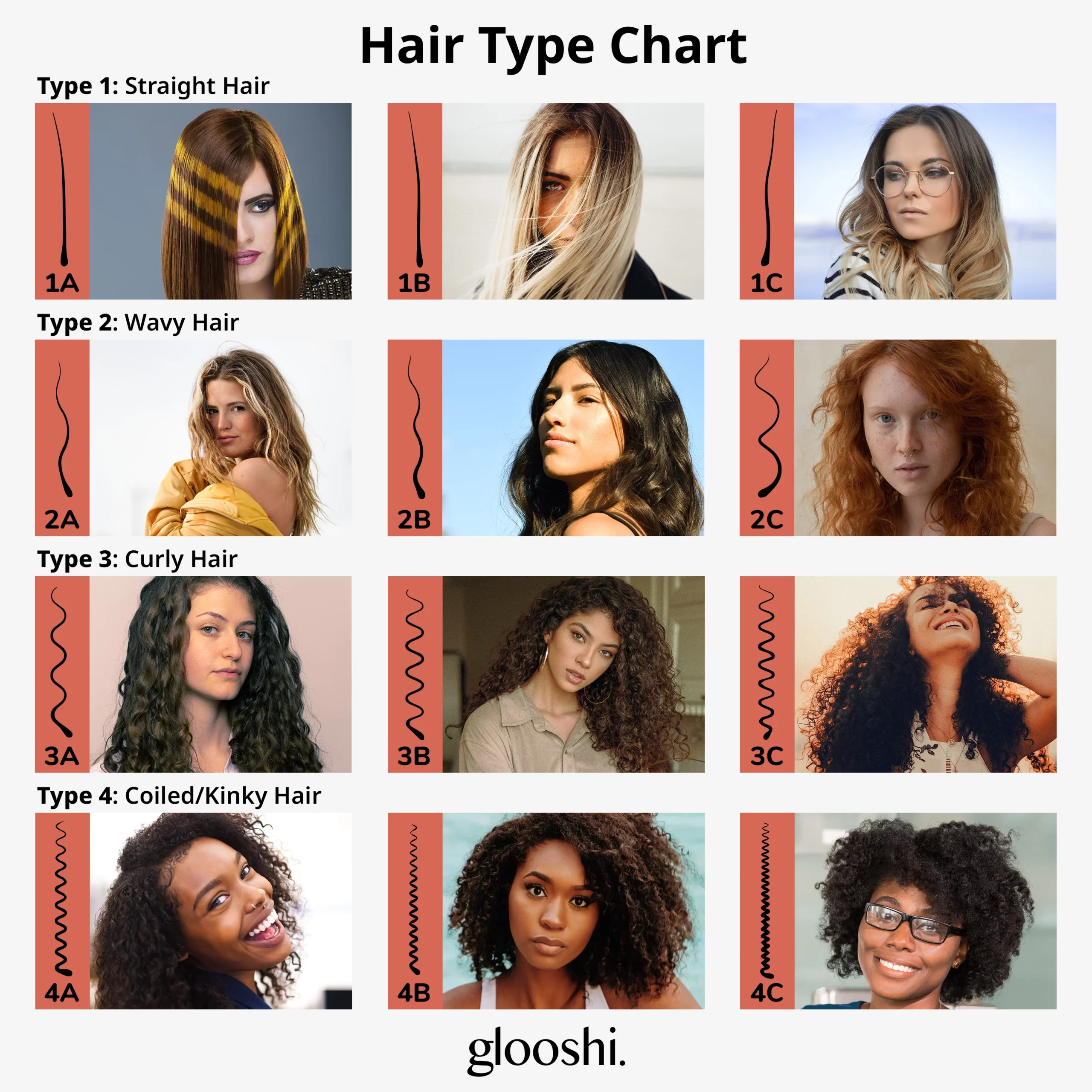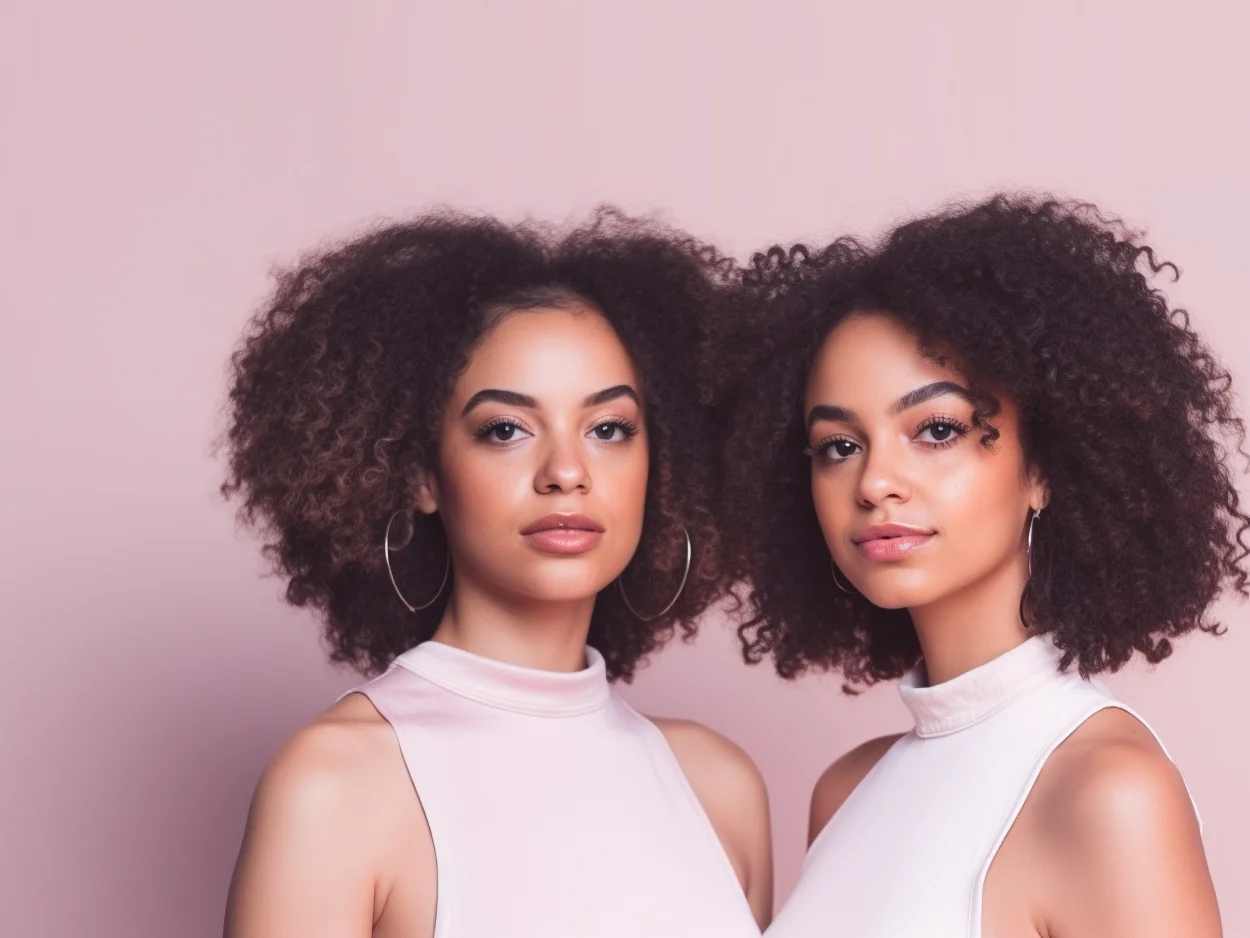Much like the skin type categorizations within skincare (normal, oily, dry, sensitive & combination), the haircare industry has a similar framework.
Understanding your hair type is essential for proper hair care and styling. Everyone’s hair is unique, and knowing your hair type can help you determine the best products and techniques to use for healthy and beautiful hair. In this article, we will delve into the different hair types, how to determine your hair type, and what it means for your hair care routine.
Whether you have curly, straight, or wavy hair, understanding your hair type is the first step towards achieving your hair goals. So let’s get started and discover what your hair type is all about.
The Different Hair Types
Understanding the characteristics of each hair type can help you determine the best hair care routine and styling techniques to use. Let’s take a closer look at each hair type.
Type 1 Hair
Type 1 hair is the straightest hair type and can often appear shiny due to its ability to reflect light easily. However, it tends to lack volume, especially in the case of type 1A hair, which is the finest of all hair types. Type 1B hair is slightly thicker and has more volume, while type 1C hair is straight but thick and has more texture and volume than the other subtypes.
Because type 1 hair tends to be oilier than other hair types, it may require more frequent washing, and it is important to use a lightweight conditioner to avoid weighing down the hair.
Type 2 Hair
Type 2 hair has a slight wave pattern, which can often make it appear “beachy” or “tousled.” However, this hair type tends to be more prone to frizz than type 1 hair. Type 2A hair is fine and has a gentle wave, while type 2B hair has a more defined S-shaped wave pattern. Type 2C hair is thick and has a more pronounced wave pattern.
Type 2 hair may require additional styling products to control frizz and maintain its wave pattern. It is also important to avoid brushing or combing this hair type when it is dry to prevent disrupting the wave pattern.
Type 3 Hair
Type 3 hair is curly and has a defined, spiral-shaped pattern. It ranges from large, loose curls (type 3A) to tight, corkscrew curls (type 3C). This hair type tends to be prone to frizz and dryness, so it is important to use hydrating products, such as leave-in conditioners and curl creams, and protective styling techniques, such as braids or twists, to prevent breakage and promote healthy curls.
Type 3 hair also benefits from using a diffuser when blow-drying to enhance curl definition and minimize frizz.
Type 4 Hair
Type 4 hair is the most tightly coiled hair type and is often referred to as “natural” hair. It ranges from tightly coiled curls with an S-shaped pattern (type 4A) to a Z-shaped pattern that may be more fragile and prone to breakage (type 4B) to a tighter zig-zag pattern that may appear more wiry and delicate (type 4C).
This hair type requires a lot of moisture to prevent breakage and maintain curl definition, and it is important to use gentle handling techniques when styling. Protective stylings, such as braids, twists, or buns, can also help prevent breakage and promote healthy hair growth.
Hair type chart
Remember, your hair type summarises the “character”, texture and consistency of your hair – it’s got nothing to do with your hair colour or style.
Figuring out your hair type is not an exact science; use our helpful chart below to gauge your hair type.

How to care for each hair type
While it may seem fairly straightforward, each hair type will need a slightly different approach to keep it looking and feeling its best. Here are some general guidelines on how to care for each hair type:
- Type 1 Hair: Type 1 hair tends to be oilier than other hair types, so it may require more frequent washing. Use a lightweight shampoo and conditioner to avoid weighing down the hair, and try to avoid heavy styling products that can make the hair appear greasy. To add volume, consider using a volumizing mousse or root lift spray at the roots. You can also try blow-drying your hair with a round brush to create volume and lift.
- Type 2 Hair: Type 2 hair can often benefit from regular washing with a moisturizing shampoo and conditioner. To enhance the wave pattern, try using a curl-enhancing gel or mousse while the hair is still damp. You can also try diffusing your hair when blow-drying to enhance curl definition and minimize frizz. Avoid brushing or combing your hair when it is dry, as this can disrupt the wave pattern and cause frizz.
- Type 3 Hair: Type 3 hair tends to be prone to frizz and dryness, so it is important to use hydrating products and protective styling techniques. Use a moisturizing shampoo and conditioner, and consider using a deep conditioning treatment once a week to keep your curls healthy and hydrated. To define your curls, use a curl-enhancing product, such as a curl cream or gel, while your hair is still damp. You can also try diffusing your hair when blow-drying or air-drying to enhance curl definition and minimize frizz. When styling, use gentle techniques to prevent breakage and promote healthy hair growth.
- Type 4 Hair: Type 4 hair requires a lot of moisture to prevent breakage and maintain curl definition. Use a moisturizing shampoo and conditioner, and consider using a leave-in conditioner or hair oil to keep your curls hydrated. To enhance curl definition, use a curl-enhancing product, such as a curl cream or gel, while your hair is still damp. You can also try twist-outs or braid-outs to create defined curls. When styling, use gentle techniques to prevent breakage, such as finger detangling or using a wide-tooth comb. Protective styling, such as braids or twists, can also help prevent breakage and promote healthy hair growth.
In summary
Understanding your hair type is essential for proper hair care and styling. From straight to tightly coiled, each hair type has unique characteristics that require specific products and techniques for healthy and beautiful hair. By following the guidelines provided for each hair type, you can achieve your hair goals and maintain healthy hair.

